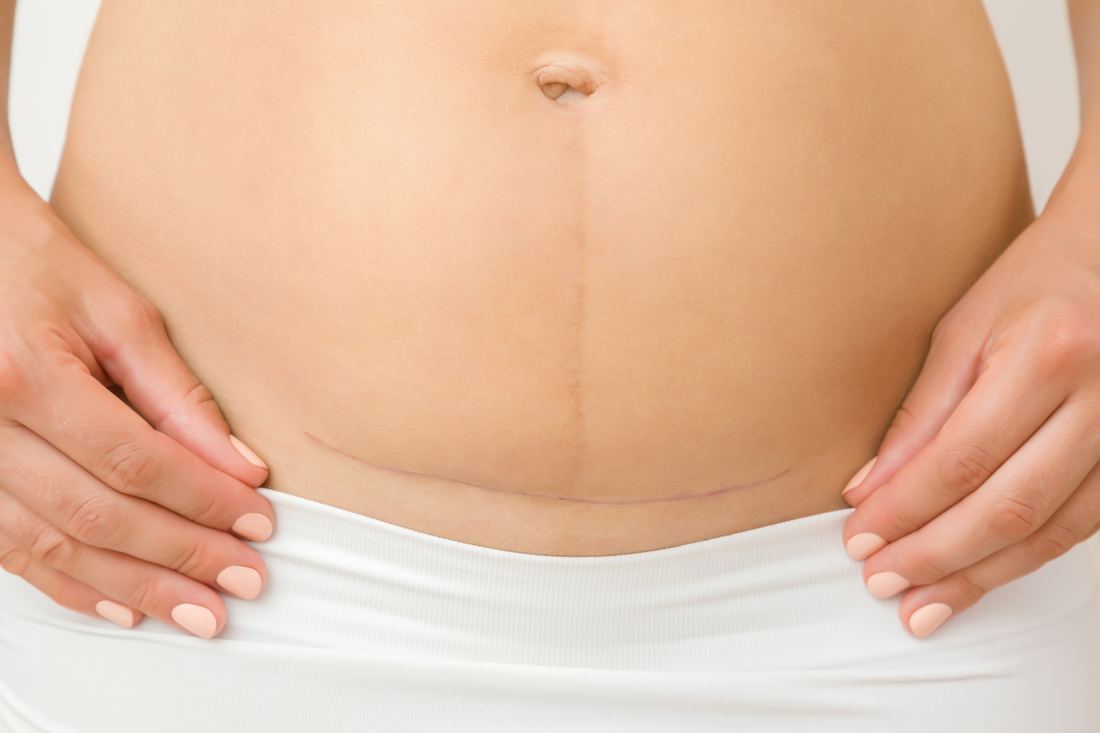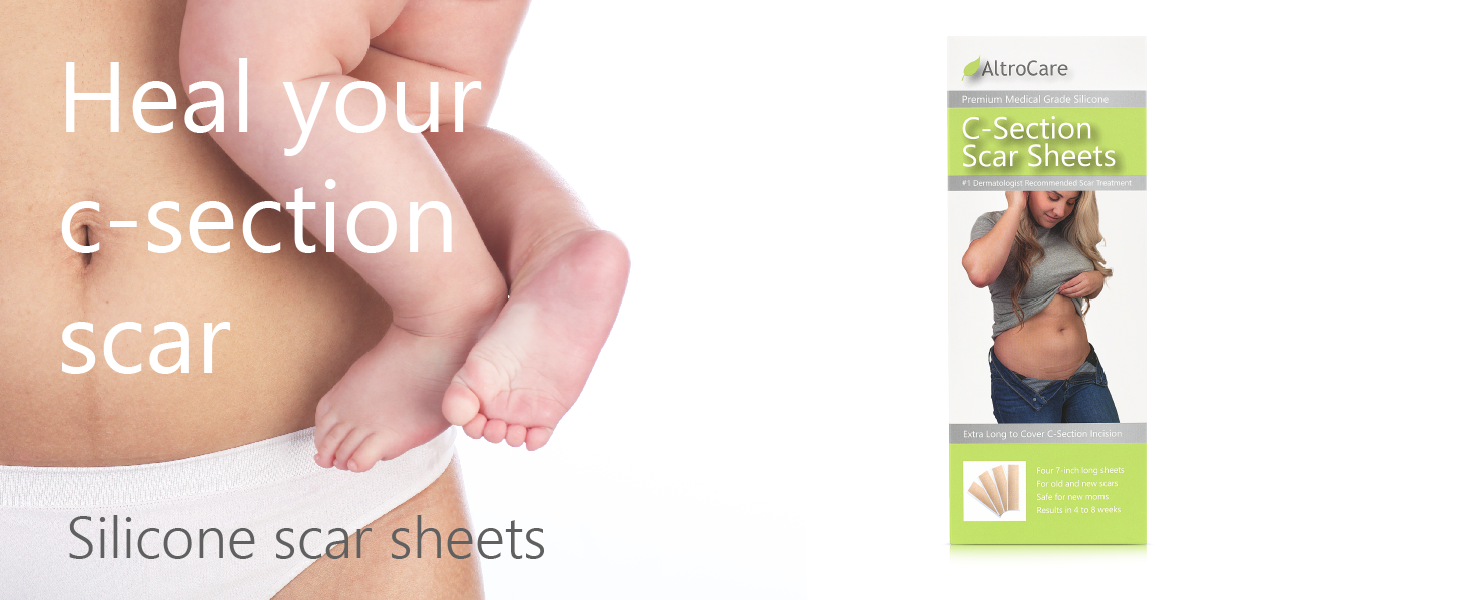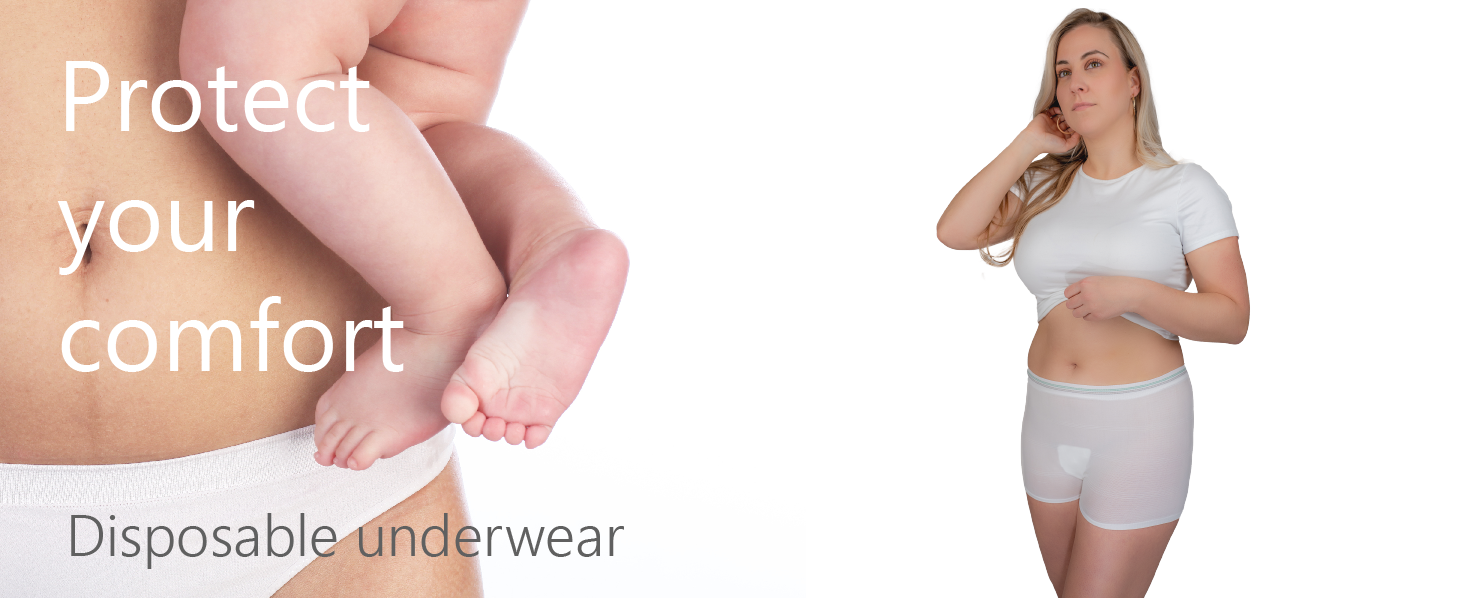Almost one third of all babies born in the USA, are brought into this world with a C-Section. That means that there are an awful lot of mommies like me, who have a C-Section scar. The good news is that C-sections are generally safe and C-section scars are usually small and below the bikini line.
As with any surgery, C-section incisions take time to heal. Usually your incision will heal properly without any issues. However, even if you do everything right, you may experience complications. The golden rule is to err on the side of caution. If there is any sign that your incision is opening up or getting infected, stop reading and call your OB-GYN right away.
There are two types of incisions your surgeon can make: a vertical cut from between your navel to your pubic line (classic cut), or a horizontal side-to-side cut in your lower belly (bikini cut). Bikini cuts are generally preferred because they tend to be less painful and less visible after healing. A classic cut leaves more scarring but it may be necessary with an emergency C-section.
Caring for your incision is actually quite straightforward: keep the scar area clean, eat healthy food, and start doing exercise after about 6 weeks or whenever your healthcare provider thinks it is safe. It usually takes about six weeks for your scar to heal. After that it may turn purple or reddish for a couple of months, before finally fading into a thin line that you can barely notice.
However with some women their scar will become thick, red and raised. That may mean that your scar is hypertrophic, which means your body created more scar tissue than necessary. If you are bothered by your scar’s appearance or if it itches, you may want to consider a scar treatment. The most common non-surgical treatment is to apply silicone scar sheets. Silicone has been around for ages and has been shown to help with scars by hydrating the skin and creating a healthy environment for scars to heal.
Silicone scar treatments come in gels, rolls and sheets. Most moms find that sheets are more practical because gels rub off easily, while rolls are often hard to cut to size and to keep clean (silicone is sticky!). Standard sheets however are often too small. The average C-section incision is between 4 and 6 inches long, so make sure you buy extra-long sheets that are at least 7” long to leave ample room on both sides of the scar.
You can start applying the silicone sheets about 7 days after your incision is healed. Clean and dry your scar area, remove the sheet from the pouch, peel off the liner and apply sheet with the adhesive side directly on the scar. You will notice the sheet is really sticky on one side - that’s the silicone! Silicone also repels water, so you can actually keep the sheet on while taking a shower. Sheets can be worn for days on end, day and night, as long as they remain sticky. For best results wear them at least 12 hours a day or more. When they no longer stick, that means it’s time for a new sheet.
Silicone scar sheets may not make your scar go away completely, but they can really make them look and feel better. Remember, in the end your C-section scar is a badge of honor. Take good care of it and feel your best!





